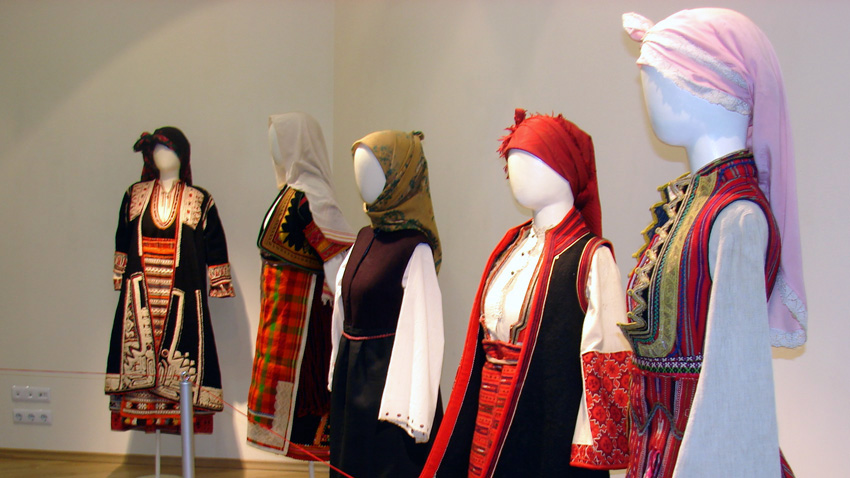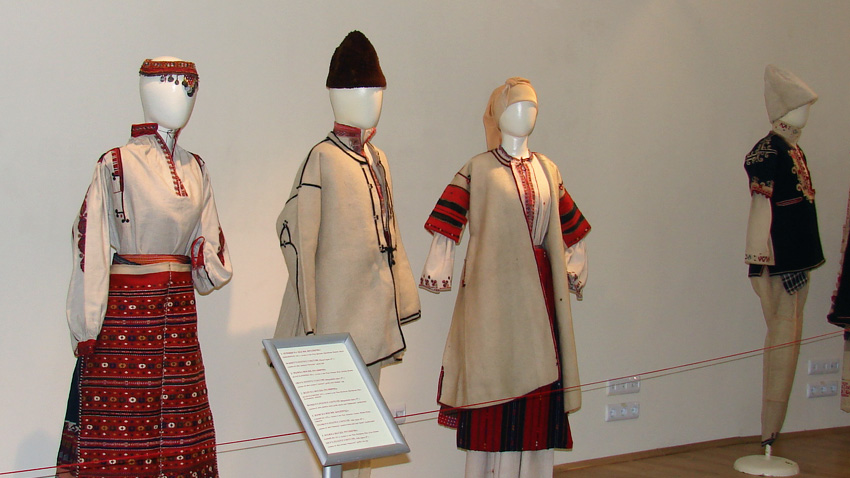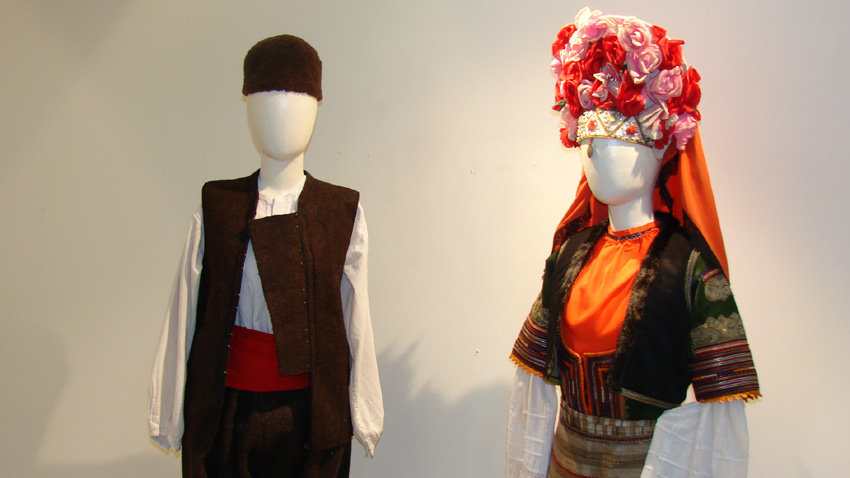Richly decorated men's and women's wedding attire in combination with jewellery, ornate belt buckles, aprons and belts are on display at the “Traditional national costumes” exhibition in Bourgas on the Black Sea, evoking a huge amount of interest.
The authentic exhibits coming from different parts of Bulgaria were donated by the Bulgarian Academy of Sciences' Institute for Ethnology and Folklore Studies with Ethnographic Museum. A pageant of traditional costumes to the sound of folk music was organized at the opening of the exhibition.

Here is more about the event from Anelia Kazakova from Bourgas municipality:
“The Marine Casino cultural centre devoted six weeks to the beauty of traditional Bulgarian clothes. The exhibition showcases the beauty and diversity of traditional garments that go back centuries. For example, the traditional costumes on show here are 150 years old. There are men's and women's items of clothing from different folklore regions - from the Shoppe region, from Dobroudja, Pirin, Thrace, the Rhodopes, the region of Moesia. I would like to make mention of a wedding dress from the region of Kyustendil, a costume from the National Revival period from Zheravna, traditional women's clothing from the Bulgarian community in Bessarabia.”

Anelia Kazakova adds that the idea is to bring people in touch with history and tradition and pass them on to the coming generations.
Visitors marvel at the array of accessories - bodices, belts, belt buckles, bracelets, stockings, slippers, leather shoes and boots from Burdarski Geran village near Byala Slatina, but also pattens for city dwellers and the calfskin tsurvouli (traditional village shoes without soles, laced up to the knee) that are more than 150 years old. One of the costumes from Sofia goes with a pinafore plus gloves.

Traditional clothing has a deep meaning, indicating the social standing as well as the age of the woman. Older women would dress in darker clothes - black or maroon for example, while head scarves had to be plain, in just one colour. Young girls, on the other hand wore an array of colours as well as embroidery. According to tradition, while they were sewing and embroidering their clothes, women would invariably leave some element unfinished in their shirt, apron or skirt. It was believed that this warded off evil.
English version: Milena Daynova
A thirty-six-hour theater and film marathon will be presented to audiences in Sofia by the students of the National Academy for Theatre and Film Arts "Krastyo Sarafov". The 20th anniversary edition will take place from today until Sunday...
"Tableware", "assembly line", "production process" - this is the terminology of the so-called applied artists of 20th century Bulgaria. But one artist, trapped within the confines of a socialist factory, broke free and gave wings to her talent...
A feature film is being made about the life of Lili Ivanova, the team of the biggest name in Bulgarian pop music announced. The film has the working title "Lili - Love is Life". Bulgarian pop legend Lili Ivanova awarded the President's Badge of..
A feature film is being made about the life of Lili Ivanova, the team of the biggest name in Bulgarian pop music announced. The film has the working..
"Tableware", "assembly line", "production process" - this is the terminology of the so-called applied artists of 20th century Bulgaria. But one artist,..
The premiere of the Bulgarian-Ukrainian film "The End of the River" by Bessarabian-Bulgarian director Vasil Barkov will take place today at 6.30pm at the..

+359 2 9336 661
